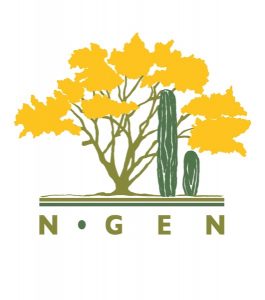Rodolfo Peon-Anaya (1) and Christopher B. Yazzie (2)
1. Ph.D Candidate, Arid Lands Resource Sciences GIDP, University of Arizona
2. M.S. Candidate Chemical and Environmental Engineering, University of Arizona
A visit to the Navajo Nation in the arid Southwestern United States is like a travel through time. A trip to a place where traditional lifestyle and pristine landscapes meet with the use of modern technology. In these sacred lands for the ‘Dine’ (the people), livestock graze freely on virtually interminable fence-less open prairies surrounded by colorful shallow canyons on the far distance. Suddenly, these breathtaking views are interrupted by lonely solar-powered wells patiently waiting for herds of cattle, horses and sheep to come and calm their voracious thirst.
These wells are also visited by local inhabitants to fill a typical 250-gallon container in the back of their trucks. Some of them do it twice, or even three times a week; some of them come from miles far away. Known as “water hauling”, this has been a common practice at the Navajo Nation for generations. The Navajo Nation is the largest Indigenous nation in the United States. Nearly 200,000 people live on approximately 27,000 square miles that spreads across the states of Arizona, New Mexico, and Utah. The scattered nature of human settlements in this vast territory has made price-prohibitive the implementation of conventional infrastructure. Therefore, it is estimated that 21% and 27% of homes in the Navajo Nation are still not connected to the power grid and water services respectively.
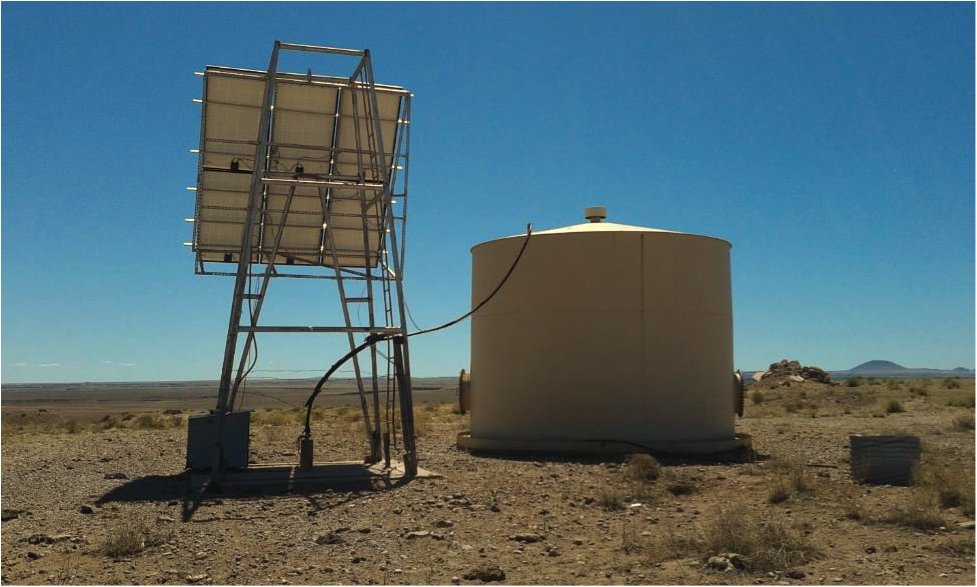
For the people who rely on hauled water, a 250-gallon storage tank filled once a week will only provide each family member with less than two buckets of water per day. Surprisingly most hauled water will be given to livestock for drinking. On the other hand, agriculture, an essential activity for the Dine’s food sovereignty, is practically impossible using hauled water. Therefore, in this high elevation desert that receives less than 12 inches of rain per year, seasonal agriculture has been the only alternative. Nevertheless, this practice has been gradually disappearing as consequence of longer periods of drought and climate variability.
Furthermore, in the 1940’s to 1960’s intensive uranium mining activities took place at the Navajo Nation to be used mainly in the manufacturing of nuclear weapons during the cold war. Nowadays, there are more than 500 abandoned mines at the Navajo Nation. Radionuclides like radon and uranium ore left exposed to the elements on mine tailings have contaminated surrounding water bodies and still pose a serious health hazard through respiratory ways; even from miles away. From the 1970’s to this day the Navajo people have resisted new uranium mining, within and near the nation’s borders. However, near the Grand Canyon and neighboring tribal nation, the Havasupai Tribe, “The Canyon Mine” is preparing to start extracting uranium ore again, threatening sacred sites like Red Butte Mountain and the health of more than 40 million people that live downstream the Colorado River. Despite, these day-to-day challenges, the beauty and spiritual value of these lands, combined with the desire of the Dine to preserve their rich cultural heritage, constantly convinces them to stay and look for alternatives.
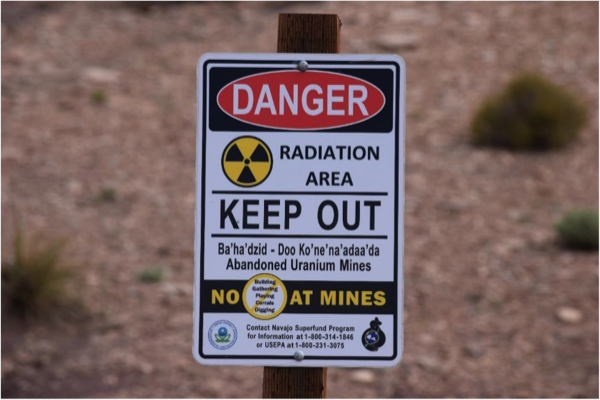
Fortunately, a massive saline aquifer lies beneath the entire Navajo Nation, which though the implementation desalination plants could provide all the inhabitants with drinking water. In addition, this area is also rich on solar resource, which can be used as a reliable energy source for a clean and virtually free operation of water treatment plants. A group of researchers from the University of Arizona’s Department of Chemical and Environmental Engineering have pioneered the deployment of experimental solar desalination plants at the Navajo Nation since 2010. The first Solar Desalination test site was located at the 5T-529 well on the southwest corner of the Navajo Nation. This place is located 11 miles northwest of Leupp, Arizona, to the north of the Little Colorado river and the San Francisco Peak (a sacred mountain to 13 different tribes) and to the Southeast of the Grand Canyon. Strategic partnerships with the U.S. Bureau of Reclamation, the STAR Chapter School and companies like Apex Applied Technologies (AATECH) have been key for the ongoing research work and deployment of more experimental units.
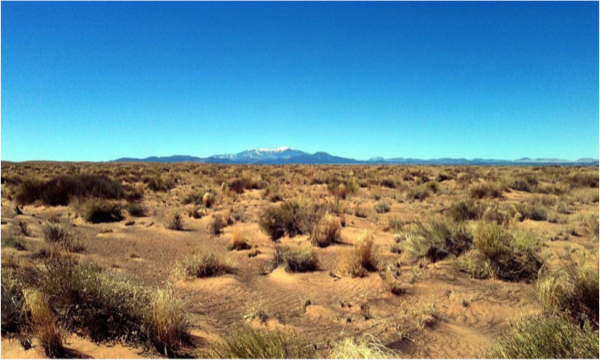
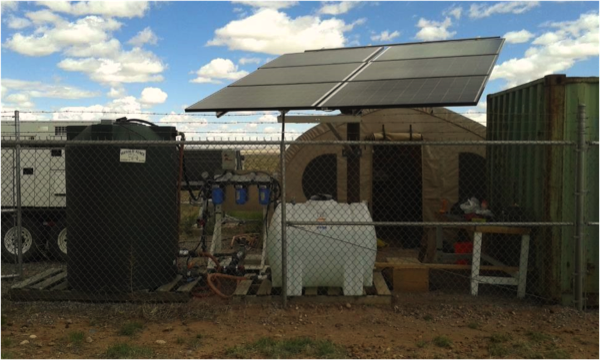
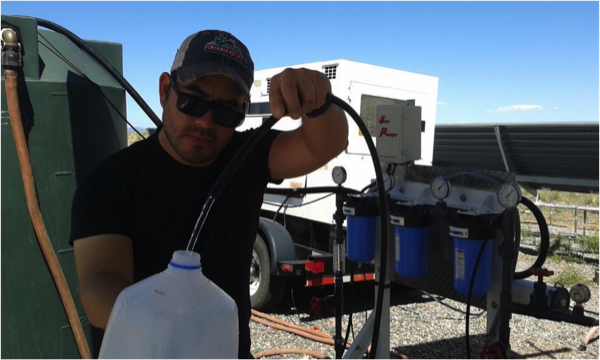
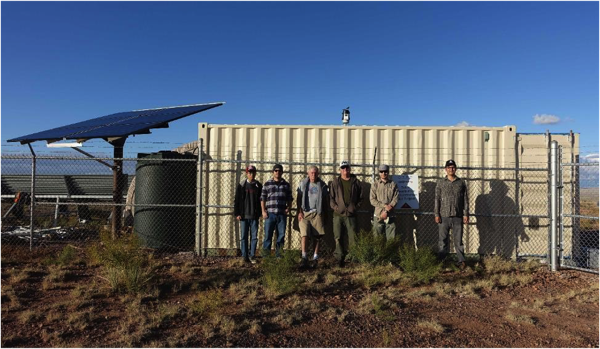
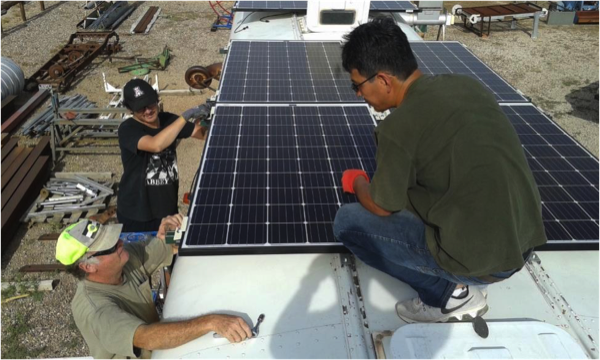
As graduate students at the University of Arizona and active volunteers of these projects, we had the great privilege to see desalination in action at very remote locations; where access to plenty of freshwater was previously unimaginable. Our more than two years already of volunteering work involved supporting design, construction and testing of multiple types of desalination units. These activities were very instructive but also provided us with technical challenges that we are now each addressing in our thesis dissertations.
Of the technologies tested on site, thermal-based desalination provided superior quality clean water and practically zero waste. However, this type of technology requires a great amount of energy per volume of treated water; which would represent a large upfront investment for large-scale implementation. In contrast, membrane-based desalination, like nanofiltration (a similar process to reverse Osmosis) proved to be the most effective in terms of simplicity, yield of freshwater per day and a power consumption 100 times less than thermal-based desalination. A relatively low pressure operation (~ 80 PSI) on membrane-based desalination systems significantly reduces energy consumption and maximizes equipment lifetime. However, this will translate into a production of large volumes of even more salty waste. Hence, the question we are currently working on from our fields of expertise is: what can we do with the waste brine from desalination plants?
In practice, brine from desalination plants is typically sent back to the water source or poured on artificial ponds to vaporize. Brine could be also used for growing salt tolerant crops. However, with the presence of heavy metals, both practices can become a health hazard. Fortunately, water can be pre-treated before entering the existing nanofiltration units using electro dialysis or electro sorption processes. This way, dissolved ions like uranium and other heavy metals can be removed from water prior entering the desalination process.
In electro absorption, hazardous metals are collected on electrodes which are then processed for decontamination and reused. Electrochemistry is promising in that it can be powered by photovoltaics. In addition, If the volume of waste water from this pre-treatment units is marginal, it can be vaporized using concentrated solar energy; leaving the salts behind which can be retrieved and safely disposed. Once brine is free from hazardous elements it can be used to grow hydroponic crops, opening the opportunity not only for water security for also food security for the end-users.
Like the Solar Nanofiltration project, a Solar Electrochemical treatment process will be pushing new boundary on what is possible for small scale rural water treatment. Hence, having this technical possibility, Christopher Yazzie is working on nanofiltration and electrochemical treatment methods to remove uranium from water that produce small volumes of waste, while Rodolfo Peon is working on the development of new generation concentration photovoltaics to provide electricity and thermal energy to run practically “waste free” desalination plants.
We want to sincerely thank Dr. Bob Arnold, Dr. Vicky Karanikola, Ardeth Barhart, Bob Seaman, Dr. Roger Angel, Dr. Mark Sorensen, North Leupp Family Farms, Apex Applied Technologies and the Navajo Nation for letting us be part of this adventure and great learning experience.


